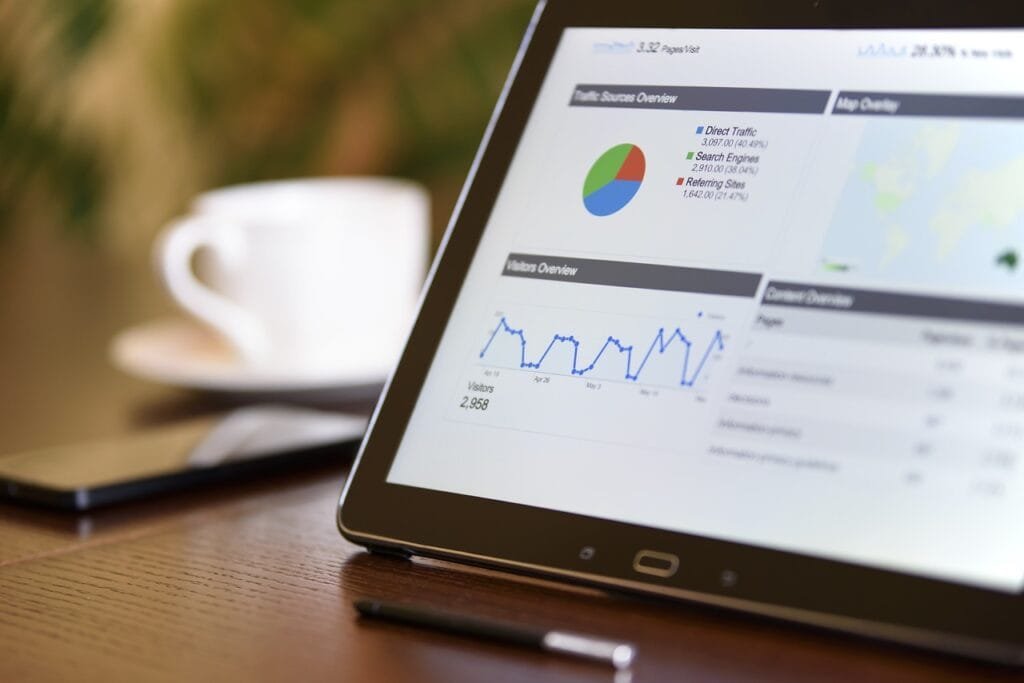This Article has been revised, edited and added to, by Poulomi Chakraborty.
- Introduction: The Importance of Local SEO for Green Businesses
- Keyword Research: Green Keywords that Matter
- Optimizing Your Google My Business Profile
- Local Link Building for Sustainability
- Customer Reviews and Reputation Management
- On-Page SEO: Eco-Friendly Content That Converts
- Mobile Optimization for Local Visibility
- Voice Search and the Future of Local SEO
- Tracking Success: Metrics That Matter
- Conclusion: A Greener Future Through Local SEO
In today’s environmentally conscious world, green brick-and-mortar businesses are on the rise. These businesses, committed to sustainability and eco-friendliness, often cater to local communities. But what good is a green business if it can’t be found by the very community it serves? This is where Local SEO (Search Engine Optimization) comes into play.
Local SEO tactics help green brick-and-mortar businesses improve their online visibility, ensuring that eco-conscious consumers can easily find them when searching for products or services in their area. In this comprehensive guide, we will explore effective Local SEO strategies tailored specifically for green businesses.
Now, let’s dive right into the first section:
Introduction: The Importance of Local SEO for Green Businesses

Imagine you run an eco-friendly coffee shop or a sustainable clothing store in your local community. You’ve put tremendous effort into creating a business that aligns with your green values, sourcing organic products and implementing energy-saving practices. You’re making a positive impact on the environment, but how do you ensure that your community knows about your green oasis?
This is where Local SEO becomes your best friend. Local SEO is all about optimizing your online presence so that your business shows up in local search results when potential customers are looking for products or services like yours. It’s not just about ranking high on Google; it’s about connecting with the people in your community who share your passion for sustainability.
Why Local SEO Matters for Green Businesses
- Connect with the Local Community: Local SEO helps you bridge the gap between your green business and the local community that values sustainability. It ensures that the right people find you when they need you.
- Increase Foot Traffic: When someone searches for “organic grocery store near me” or “eco-friendly café in [your city],” you want to be the business that pops up. Local SEO can lead more people through your physical doors.
- Compete with Big Brands: Even if you’re a small green business, you can compete with larger, less eco-friendly competitors in your area by optimizing your online presence. Local SEO levels the playing field.
- Showcase Your Values: Local SEO allows you to highlight your commitment to sustainability and eco-friendliness in your online listings, making it clear to potential customers that you share their values.
- Boost Your Online Reviews: Positive online reviews, a byproduct of effective Local SEO, can enhance your reputation as a green business. Reviews from satisfied customers can convince others to choose you.
Local SEO is not just a digital marketing trend; it’s a crucial strategy for brick-and-mortar green businesses to thrive in today’s eco-conscious marketplace. In the following sections, we’ll dive deep into actionable tactics that will help you enhance your local online presence.
Keyword Research: Green Keywords that Matter
To succeed in Local SEO, you need to start with the right keywords. These are the words and phrases that people type into search engines when looking for products or services like yours. For green businesses, it’s essential to target keywords that resonate with eco-conscious consumers. Here’s how to do it:
Brainstorm Eco-Friendly Keywords
Begin by brainstorming a list of keywords that relate to your green business. Think about the terms your customers might use when searching for products or services that align with sustainability. For example:
- Organic
- Sustainable
- Eco-friendly
- Green
- Natural
- Environmentally friendly
- Zero-waste
Use Keyword Research Tools
Keyword research tools like Google’s Keyword Planner, Ubersuggest, or SEMrush can be invaluable for finding relevant keywords and assessing their search volume. Enter your brainstormed keywords into these tools to discover additional related terms and get insights into their popularity.
Long-Tail Keywords
Consider targeting long-tail keywords—phrases that are more specific and typically longer. For example, instead of targeting “organic clothing,” you might focus on “organic cotton clothing for babies” if that’s what your green business specializes in. Long-tail keywords can help you capture highly targeted traffic.
Competitive Analysis
Take a look at what keywords your competitors are targeting. This can provide valuable insights and help you identify opportunities to differentiate your green business. Tools like SEMrush or Ahrefs can help you analyze competitor keywords.
Local Keywords
Don’t forget to incorporate local keywords into your strategy. Include your city, neighborhood, or region in your keywords. For instance, if you’re an eco-friendly cafe in Seattle, “eco-friendly cafe Seattle” should be a primary target.
Content Optimization
Once you’ve identified your target keywords, it’s time to optimize your website and online profiles accordingly. Incorporate these keywords naturally into your website’s content, meta tags, headings, and alt text for images.
Effective keyword research lays the foundation for your Local SEO strategy, ensuring that your green business is visible to people who are actively seeking sustainable products or services in your area.
Optimizing Your Google My Business Profile

Your Google My Business (GMB) profile is a powerful tool for local SEO. It’s like a digital storefront for your green brick-and-mortar business. Here’s how to optimize it effectively:
Claim and Verify Your GMB Listing
If you haven’t already, claim your GMB listing. Go to the Google My Business website, follow the steps to claim your business, and verify it through the available methods, such as postcard verification or phone verification.
Provide Accurate Information
Ensure that all the information on your GMB profile is accurate and up-to-date. This includes your business name, address, phone number, website URL, and business hours. Consistency is key here; the information should match what’s on your website and other online listings.
Select Relevant Categories
Choose relevant categories for your business. Google allows you to select primary and secondary categories. For instance, if you run an organic grocery store, your primary category should be “Organic Food Store,” and your secondary category might be “Health Food Store.”
Craft an Engaging Business Description
Write a compelling business description that highlights your green values and what sets your business apart. Use relevant keywords naturally, but remember to focus on providing value to potential customers.
Add High-Quality Photos
Upload high-quality images of your green business, including your storefront, products, and the eco-friendly practices you follow. Images can help potential customers get a feel for your business and build trust.
Encourage Customer Reviews
Positive reviews on your GMB profile can significantly boost your Local SEO efforts. Encourage satisfied customers to leave reviews, and respond promptly and professionally to all reviews, whether positive or negative.
Utilize Google Posts
Google Posts allow you to share updates, promotions, and events directly on your GMB profile. Use this feature to keep your profile fresh and engaging, and to showcase your commitment to sustainability through posts about eco-friendly initiatives or products.
Monitor Insights
Regularly check your GMB Insights to gain insights into how people are discovering your business on Google. This data can help you refine your local SEO strategy over time.
By optimizing your Google My Business profile, you’ll increase your chances of showing up in local search results when potential customers are looking for green products or services in your area.
Local Link Building for Sustainability
Link building is a fundamental aspect of SEO, and it’s equally crucial for local SEO. When other reputable websites link to your green business website, it signals to search engines that your site is authoritative and trustworthy. Here are effective local link-building strategies:
Partner with Local Eco-Organizations
Collaborate with local environmental organizations or sustainability groups. They may be willing to link to your website in their resources section, event listings, or news updates when you support or participate in eco-friendly initiatives or events.
Sponsor Local Green Events
Sponsoring local eco-events, such as environmental fairs, clean-up drives, or sustainability workshops, can earn you valuable backlinks. Event organizers often feature sponsors on their websites with links to the sponsors’ sites.
Create Eco-Friendly Content
Develop high-quality, informative, and engaging content related to sustainability and eco-friendliness in your local area. This could include blog posts, articles, or infographics. Other websites are more likely to link to your content when it provides value to their readers.
Seek Coverage in Local Media
Pitch eco-friendly stories or news about your green business to local media outlets. When they cover your story, they’ll often include a link to your website. This not only builds links but also boosts your local reputation.
Collaborate with Local Businesses
Partner with other local businesses that share your sustainability values. Cross-promotion and co-hosted events or campaigns can lead to reciprocal links on each other’s websites.
Engage in Local Directories
Submit your business information to local directories and chambers of commerce websites. These listings not only provide valuable backlinks but also help potential customers find you more easily.
Encourage User-Generated Content
Encourage customers to create and share content about their experiences with your green products or services. When they link back to your website or mention your business, it can boost your online presence.
Monitor Your Backlinks
Regularly monitor your backlinks to ensure they are still active and relevant. If you find broken or outdated links, reach out to the website owners to request corrections.
Remember that quality matters more than quantity when it comes to backlinks. Focus on building links from reputable and relevant sources within your local community.

Related: Check out our free SEO suite

Customer Reviews and Reputation Management
Customer reviews are a vital component of local SEO for green businesses. Positive reviews can boost your visibility and credibility, while negative ones can harm your reputation. Here’s how to manage customer reviews effectively:
Encourage Reviews
Proactively encourage satisfied customers to leave reviews on platforms like Google, Yelp, and TripAdvisor. You can do this through follow-up emails, in-store signage, or by providing exceptional service that naturally leads to positive feedback.
Respond to Reviews
Respond promptly and professionally to all reviews, both positive and negative. Thank customers for their feedback and address any concerns they may have. Your responses demonstrate your commitment to customer satisfaction.
Use Review Management Tools
Consider using review management tools like ReviewTrackers or BrightLocal to monitor reviews across various platforms. These tools can help you stay on top of new reviews and respond efficiently.
Avoid Fake Reviews
Never create or encourage fake reviews. Authenticity is key in review management. Fake reviews can damage your reputation and lead to severe consequences.
Showcase Positive Reviews
Feature positive reviews on your website, social media profiles, or promotional materials. This not only highlights your satisfied customers but also provides fresh content for your online presence.
Address Negative Reviews
When addressing negative reviews, stay calm and constructive. Avoid getting defensive, and focus on finding solutions to the customer’s concerns. Potential customers will appreciate your professionalism.
Learn from Feedback
Use customer feedback, especially constructive criticism, as an opportunity to improve your green business. Implement changes based on recurring issues mentioned in reviews.
Stay Consistent
Maintain consistency in how you request, respond to, and showcase reviews. Consistency builds trust with customers and demonstrates your dedication to transparency.
Effective review management not only contributes to your local SEO efforts but also enhances your green business’s reputation as a trustworthy and customer-centric establishment.
On-Page SEO: Eco-Friendly Content That Converts

Optimizing your website’s on-page content is crucial for local SEO. It helps search engines understand what your green business is about and how it can serve local customers. Here are tactics for eco-friendly on-page SEO:
Create Localized Content
Craft content that speaks to your local audience. This could include blog posts about local eco-events, sustainable practices in your community, or stories of how your green products benefit your area.
Optimize Page Titles and Headings
Incorporate your target keywords naturally into page titles, headings (H1, H2, H3), and subheadings. Use descriptive titles and headings that reflect the content’s focus.
Write Engaging Meta Descriptions
Meta descriptions are the snippets that appear in search results. Craft compelling and informative meta descriptions that encourage users to click through to your website. Include relevant keywords and emphasize your green offerings.
Use Eco-Friendly Alt Text
When adding images to your website, provide descriptive and eco-friendly alt text for each image. Alt text not only helps with SEO but also ensures your site is accessible to all users, including those with visual impairments.
Internal Linking
Link internally to other relevant pages on your website. For example, if you have a blog post about eco-friendly gardening tips, you can link to your products or services related to gardening.
Mobile-Friendly Design
Ensure that your website is mobile-friendly. Mobile optimization is crucial for local SEO because many users search for businesses on their mobile devices.
Improve Page Speed
A fast-loading website is essential for both SEO and user experience. Compress images, reduce unnecessary code, and consider using a Content Delivery Network (CDN) to speed up your site.
Schema Markup
Implement schema markup to provide search engines with structured data about your business. This can enhance your presence in local search results and enable rich snippets, like star ratings in search listings.
Eco-Friendly Keywords
Integrate eco-friendly keywords naturally throughout your content. Explain how your green products or services benefit the environment and your local community.
High-Quality Content
Above all, create high-quality, informative, and engaging content. Content that provides value to users is more likely to rank well and convert visitors into customers.
By optimizing your on-page content with these eco-friendly SEO tactics, you’ll improve your chances of attracting local customers who are passionate about sustainability.
Mobile Optimization for Local Visibility
In the age of smartphones, mobile optimization is no longer a luxury—it’s a necessity, especially for local SEO. Here’s why mobile optimization is crucial and how to do it effectively for your green business:
The Importance of Mobile Optimization
- User Behavior: A significant portion of local searches is conducted on mobile devices. When potential customers search for green businesses nearby, they often do so on their smartphones.
- Google’s Mobile-First Indexing: Google prioritizes mobile-friendly websites in its search results. If your site isn’t mobile-optimized, you could miss out on valuable local traffic.
- User Experience: Mobile users have different expectations and behaviors compared to desktop users. A well-optimized mobile site ensures a seamless and positive user experience.
Mobile Optimization Strategies
Here are key strategies for mobile optimization:
- Responsive Design: Ensure your website uses a responsive design that adapts to different screen sizes and orientations. This is essential for providing a consistent user experience across devices.
- Page Speed: Mobile users are often on slower or less reliable connections. Optimize your website for speed by compressing images, reducing server response times, and minimizing JavaScript.
- Mobile-Friendly Content: Make sure your content is easy to read and interact with on small screens. Use legible fonts, concise paragraphs, and touch-friendly buttons.
- Optimize Images: Compress images without sacrificing quality to reduce load times on mobile devices. Implement lazy loading to ensure images only load when they become visible on the screen.
- Local Mobile SEO: Incorporate local keywords naturally into your mobile content. Highlight your green business’s location and its commitment to sustainability in a mobile-friendly way.
- User-Friendly Navigation: Simplify your website’s navigation menu for mobile users. Ensure that visitors can easily access important information, such as your contact details and product/service offerings.
- Mobile-Friendly Forms: If your green business uses contact forms or offers online ordering, ensure that these forms are mobile-friendly. Keep them short and easy to complete on a small screen.
- Google AMP (Accelerated Mobile Pages): Consider implementing Google AMP for your content. AMP pages load almost instantly on mobile devices, improving user experience and potentially boosting your rankings.
Test and Monitor
Regularly test your website on various mobile devices and browsers to ensure it functions correctly. Pay attention to page speed and usability. Google’s Mobile-Friendly Test tool can help you assess your site’s mobile-friendliness.
By prioritizing mobile optimization, your green brick-and-mortar business can better connect with local customers who rely on their smartphones to find eco-friendly products and services.
Voice Search and the Future of Local SEO

Voice search is changing the way people find information online, and it’s increasingly important for local SEO. With voice-activated devices like smartphones, smart speakers, and virtual assistants becoming ubiquitous, here’s how your green business can adapt:
Understand Voice Search Behavior
Voice searches tend to be more conversational and longer than text-based queries. Users might ask questions like, “Where can I find an eco-friendly store near me?” Understanding this behavior is crucial for optimizing your content.
Target Question-Based Keywords
Optimize your content for question-based keywords that people are likely to use in voice searches. These may include “who,” “what,” “where,” “when,” “why,” and “how” questions related to your green business.
Optimize for Featured Snippets
Voice assistants often provide information from featured snippets in search results. Structure your content to answer common questions concisely, increasing the likelihood of being featured in voice search results.
Local Voice SEO
Include location-specific information in your content, such as your city or neighborhood, to increase visibility in local voice searches. Ensure that your Google My Business listing is accurate and up-to-date.
User Intent
Consider the intent behind voice searches. Users often seek quick, actionable answers. Make sure your content addresses their needs and provides clear solutions related to sustainability and eco-friendliness.
Natural Language Processing (NLP)
Voice search relies on Natural Language Processing (NLP) to understand and respond to user queries. Create content that is easy for NLP algorithms to parse, emphasizing clarity and relevance.
Mobile Optimization
Since many voice searches happen on mobile devices, prioritize mobile optimization, as discussed earlier in this guide. A mobile-friendly website is essential for voice search success.
Schema Markup
Implement schema markup to provide structured data that search engines can use to better understand your content. This can enhance your chances of being featured in voice search results.
Local Voice Search Tactics
Consider creating content specifically tailored to local voice search, such as answering common local questions about green practices and sustainability in your area.
Voice search is an emerging trend that’s likely to shape the future of local SEO. By optimizing your green business for voice search, you can stay ahead of the curve and connect with a growing audience of eco-conscious consumers.
Tracking Success: Metrics That Matter

To gauge the effectiveness of your local SEO efforts for your green brick-and-mortar business, it’s crucial to monitor key metrics. These metrics provide insights into your performance and help you make informed decisions. Here are the metrics that matter:
Organic Search Traffic
Monitor the amount of organic (non-paid) traffic your website receives from search engines. An increase in organic traffic indicates improved visibility in search results.
Click-Through Rate (CTR)
CTR measures the percentage of users who click on your website’s link after seeing it in search results. A higher CTR suggests that your listings are compelling and relevant.
Conversion Rate
Track the conversion rate, which is the percentage of website visitors who take a desired action, such as making a purchase, signing up for a newsletter, or contacting you. It helps assess the effectiveness of your website in converting visitors into customers.
Local Search Ranking
Keep an eye on your local search rankings for specific keywords and phrases. Tools like Google Search Console and third-party SEO software can provide insights into your rankings.
Online Reviews
Monitor the quantity and quality of online reviews on platforms like Google My Business, Yelp, and industry-specific review sites. Positive reviews can boost your reputation and rankings.
Clicks on Directions and Phone Calls
For brick-and-mortar businesses, track the number of clicks on “directions” to your physical location and “phone calls” made directly from search results. These actions indicate strong user intent.
Google My Business Insights
Use the insights provided by Google My Business to understand how users find your business, where they’re located, and what actions they take. This data helps you tailor your local SEO strategy.
Mobile Traffic and Engagement
Analyze mobile-specific metrics, including mobile traffic, bounce rate, and conversion rate. With the increasing use of mobile devices for local searches, mobile optimization is critical.
Backlink Growth
Monitor the growth of backlinks to your website. Quality backlinks from authoritative sources can boost your local SEO efforts.
Local Competition Analysis
Regularly assess your performance compared to local competitors. Identify areas where you can improve and stay ahead in the local search landscape.
Online Advertising ROI (if applicable)
If you’re running paid online advertising campaigns, track the return on investment (ROI) to ensure that your advertising efforts align with your local SEO strategy.
Social Media Engagement
While not directly related to local SEO, social media engagement can indirectly impact your online visibility. Monitor social media metrics, including follower growth and engagement.
Regularly review these metrics to understand the impact of your local SEO strategies. Adjust your tactics based on the data you gather to continually improve your green business’s online presence.
Conclusion: A Greener Future Through Local SEO
Local SEO is an indispensable tool for green brick-and-mortar businesses looking to connect with their local communities. By implementing these tactics and monitoring key metrics, you can improve your online visibility, attract eco-conscious customers, and contribute to a greener future.
Remember that local SEO is an ongoing process. Stay up-to-date with SEO trends, adapt to changing customer behaviors, and remain committed to sustainability in both your business practices and your online presence. With dedication and the right strategies, your green business can thrive in the digital age.
Read Next





















